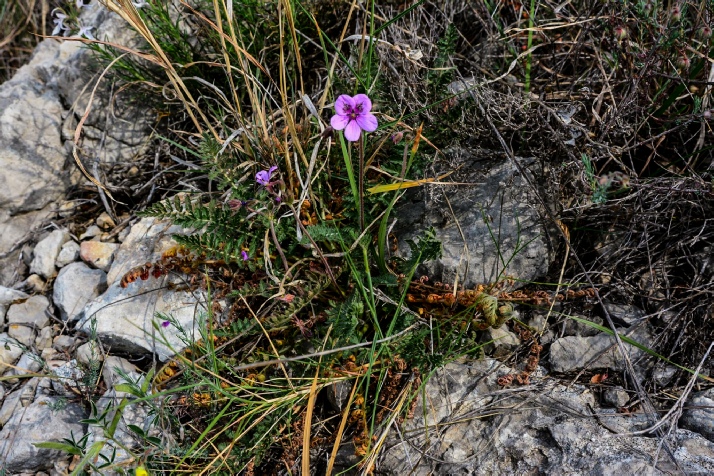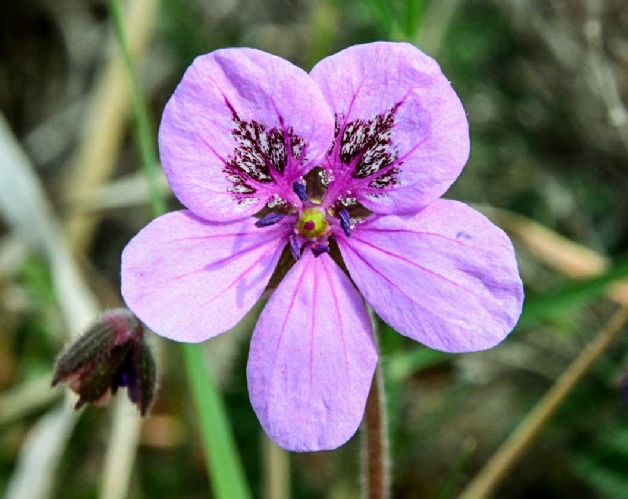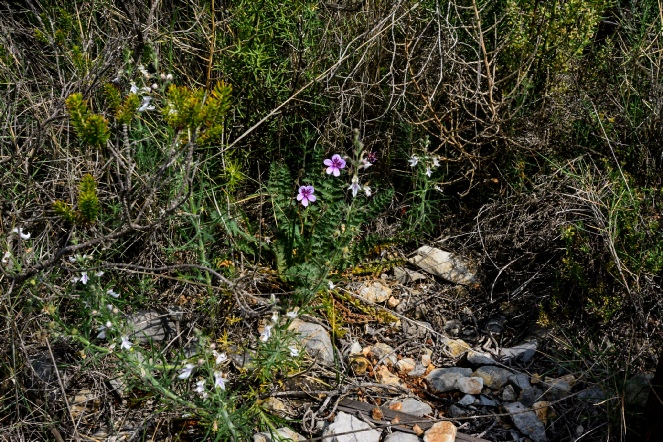Erodium
and California
This site was created and is maintained by Benjamin Coultrup.
Photos all ©Benjamin Coultrup unless otherwise indicated, 1984-
Clade I, Subclade 1
Subgenus Erodium
Clade I, Subclade 2
Subgenus Barbata
Clade II, Subclade 3
Clade II, Subclade 4
-
-



Erodium aguilellae Lopez Udias, Fabregat & G. Mateo
Clade II; Subclade 4; Section Malacoidea; Subsection Acaulia
Perennial herb, 12-
Erodium aguilellae; Spain: Photo credit: Dyoke van Assum; from the IGG Facebook Group, Licenced under Creative Commons Attribution-
Leaves: almost all basal, oval-
Erodium aguilellae; Spain: Photo credit: Dyoke van Assum; from the IGG Facebook Group, Licenced under Creative Commons Attribution-
Inflorescence: with many glandular hairs and few long eglandular hairs. Umbels 7-
Erodium aguilellae; Spain: Photo credit: Dyoke van Assum; from the IGG Facebook Group, Licenced under Creative Commons Attribution-
Fruit: Fruit 41-
Distribution: on scrub and grasslands on calcareous stony soils, sometimes on rocks, at 100-